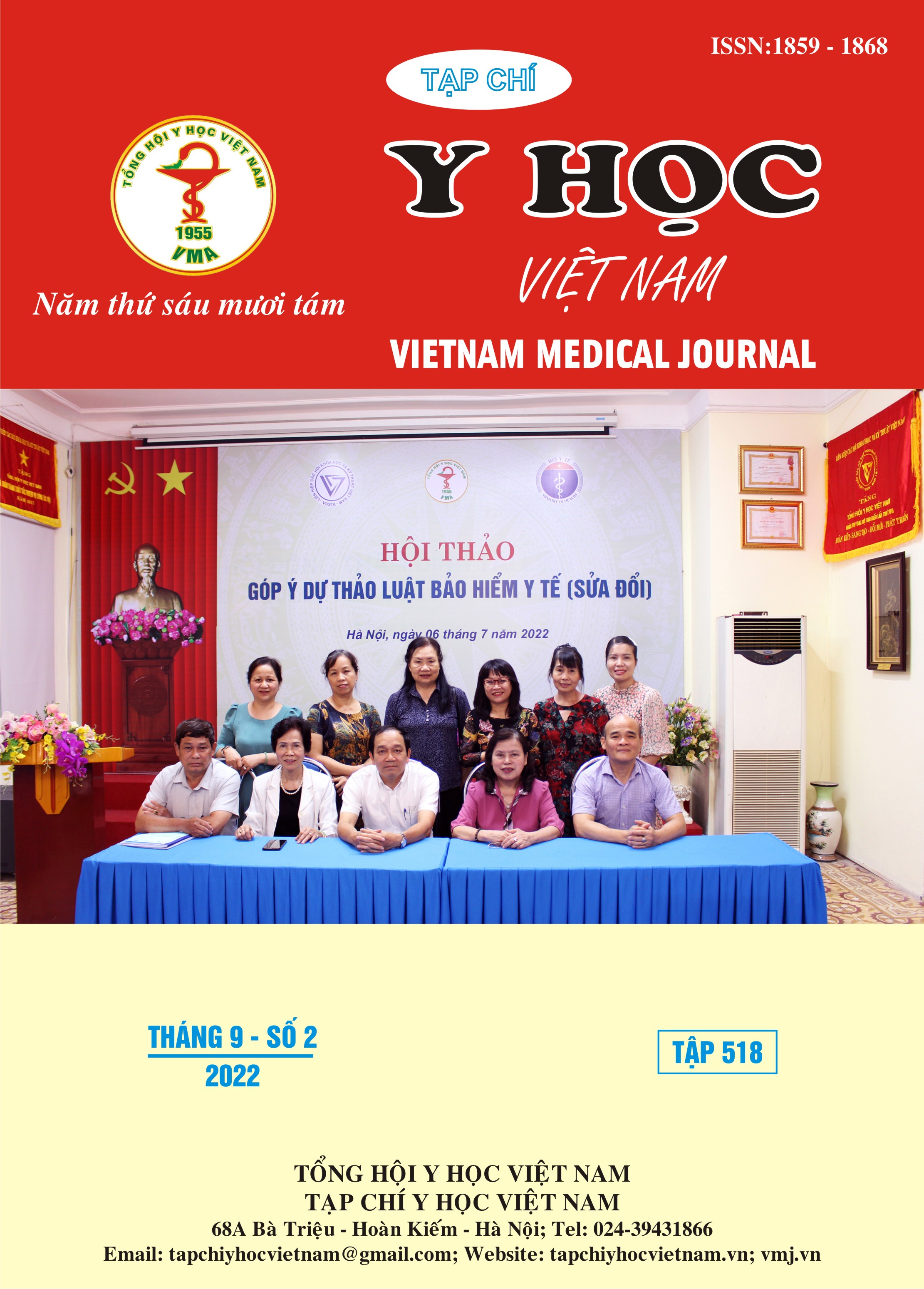ANTIMICROBIAL RESISTANCE OF KLEBSIELLA PNEUMONIAE AT CAN THO CENTRAL GENERAL HOSPITAL
Main Article Content
Abstract
Background: Klebsiella pneumoniae is known to be a common cause of infection, but it can be very severe and has a high rate of antibiotic resistance. Providing information on antibiotic resistance of Klebsiella pneumoniae is essential for clinical practice. Objectives: To evaluate antibiotic resistance of Klebsiella pneumoniaat at Can Tho Central General Hospital. Subjects and methods: A cross-sectional descriptive study was conducted on 387 isolates of Klebsiella pneumoniae from clinical specimens of septic patients at Can Tho Central General Hospital from 01/2019 to 08/2019. Conducting bacterial identification, Antibiogram and ESBL testing by using the Vitek 2 compact system. Result: Klebsiella pneumoniae was the most resistant to ampicillin with the rate of 97.4% (377/387). Next is ampicillin/ sulbactam with 84% (325/387). The sensitivity rate in Fluoroquinolones and Nitrofurans antibiotic groups is also low, only 14.2% - 19.4%. For the Carbapenems group, the medium resistance ranged from 35.9% to 40.3%. The antibiotic with the lowest resistance rate was amikacin with 3.1% (12/387). However, the remaining antibiotics in the Aminoglycosides group had a medium resistance level of 46.3% - 49.4%. The rate of multidrug-resistant Klebsiella pneumoniae was 89.1% (345/387) and ESBL-producing Klebsiella pneumoniae was 31.3% (121/387). ESBL-producing Klebsiella pneumoniae strains have higher antibiotic resistance rates than non-ESBL-producing strains. Conclusion: The Klebsiella pneumoniae strains in our study have quite high rates of antibiotic resistance and multidrug-resistant. The rate of ESBL-producing Klebsiella pneumoniae was in medium level and affected the antibiotic resistance of bacterial strains.
Article Details
Keywords
Klebsiella pneumoniae, resistance, multidrug-resistant, ESBL
References
2. Ngô Thế Hoàng, Quế Lan Hương, Nguyễn Bá Lương (2012), "Tính kháng thuốc của Klebsiella pneumoniae trong viêm phổi bệnh viện tại Bệnh Viện Thống Nhất", Tạp chí Y Học Thành Phố Hồ Chí Minh, 16 (1), tr. 264-270.
3. Bùi Thế Trung (2018), Tình hình Klebsiella pneumoniae mang gen kháng carbapenem trên bệnh nhân nhi. Tạp chí Y Học Thành Phố Hồ Chí Minh, số 5, 281-289.
4. Chu Thị Hải Yến (2014), Khảo sát tỉ lệ đề kháng kháng sinh của vi khuẩn phân lập tại Bệnh viện cấp cứu Trưng Vương. Tạp chí Y Học TP. Hồ Chí Minh, số 5, 75-82.
5. Buys H., et al (2016), "Klebsiella pneumoniae bloodstream infections at a South African children’s hospital 2006–2011, a cross-sectional study", BMC Infectious Diseases, 16 (1), pp. 570-579.
6. Jamali S., et al (2020), The Phylogenetic Relatedness of blaNDM-1 Harboring Extended-Spectrum β-Lactamase Producing Uropathogenic Escherichia coli and Klebsiella pneumoniae in the North of Iran. Infection and Drug Resistance, 1, 651–657.
7. Shin H. R., et al (2019), "Increasing prevalence of antimicrobial resistance in urinary tract infections of neurological patients, Seoul, South Korea, 2007–2016", International Journal of Infectious Diseases, 84 (1), pp. 109–115.
8. Uc-Cachón A.H., et al (2019), "High Prevalence of Antimicrobial Resistance Among Gram-Negative Isolated Bacilli in Intensive Care Units at a Tertiary-Care Hospital in Yucatán Mexico", Medicina, 55 (9), pp. 588-600.


